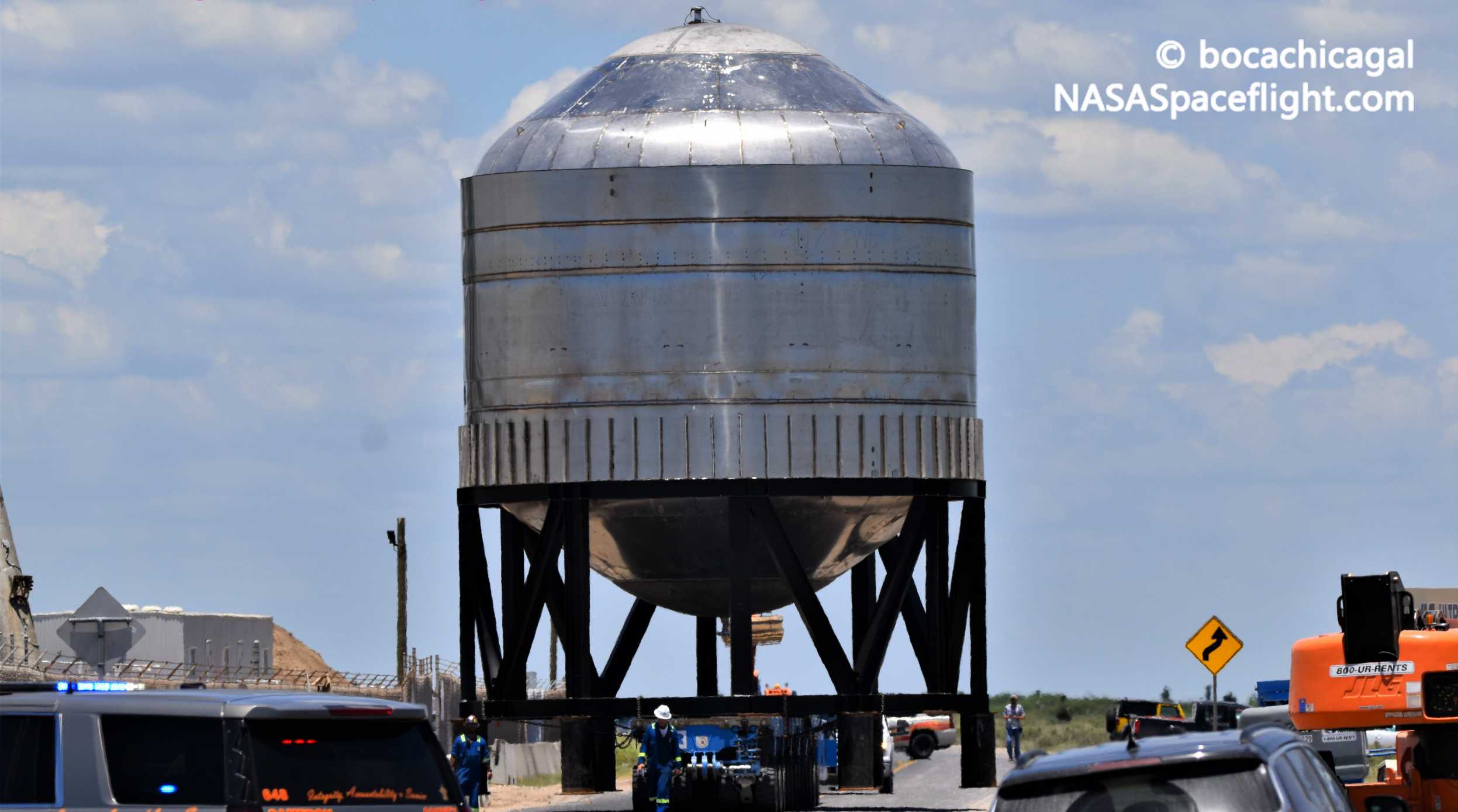
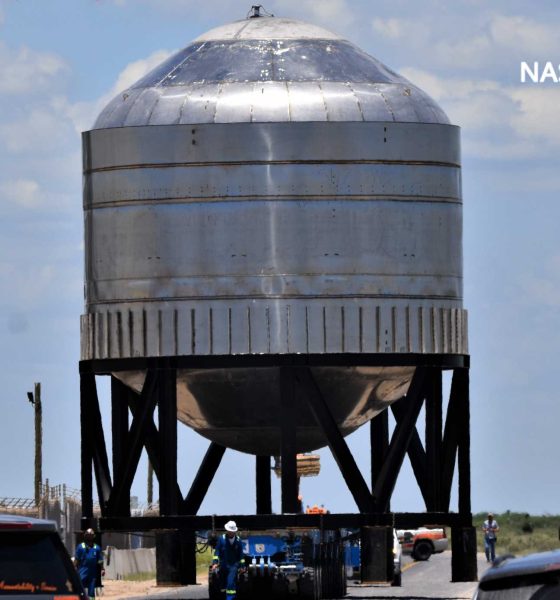
News
SpaceX’s Starship program returns to its roots with a new rocket ‘test tank’
SpaceX’s Starship rocket development program has returned to its early-2020 roots as teams work to assemble the first new ‘test tank’ built in South Texas in more than three months.
Just like its three predecessors, the newest test tank’s purpose is relatively simple: demonstrate – at full scale – the efficacy of SpaceX’s current manufacturing processes. Back when SpaceX built and tested the first two tank prototypes in January 2020, the company was in the midst of making big changes throughout its coastal Boca Chica, Texas Starship factory – a major leap forward compared to the methods used to build Starship Mk1. While the first tank made it to 7.1 bar (~103 psi) before failing, a second tank survived all the way up to 8.5 bar (~125 psi), as did a third separate test tank built about a month later. According to CEO Elon Musk, 8.5 bar is more than satisfactory for Starship pressure vessels to safely launch humans into orbit, offering a safety margin of more than 40%.
Most recently, Starship SN4 became the first full-scale prototype to replicate the results SpaceX achieved with its shorter test tanks, effortlessly reaching 7.5 bar (~110 psi) during a cryogenic pressure test completed just last month. Despite those myriad successes, however, SpaceX rarely stops moving forward and Musk has already hinted at improvements the company may be hoping to prove out with a fourth Starship test tank.
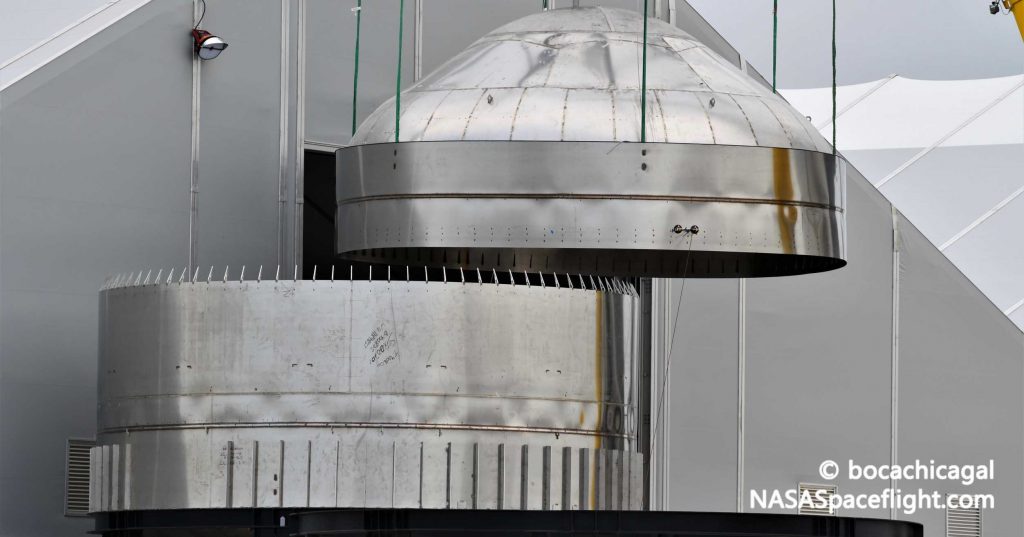
The most obvious reason to build a new test tank after the success of full-scale Starship prototype SN4 is a substantial change in the steel alloy SpaceX is building rockets out of in South Texas. CEO Elon Musk has teased such a shift for almost a full year and it appears to have happened right on time – if not ahead of schedule. SpaceX currently uses 301 stainless steel for Starship production, while the new material – discussed earlier by Musk and confirmed by inscriptions on the exterior of what would later become the fourth test tank – is a slightly different 304 steel “with higher ductility” (malleability).
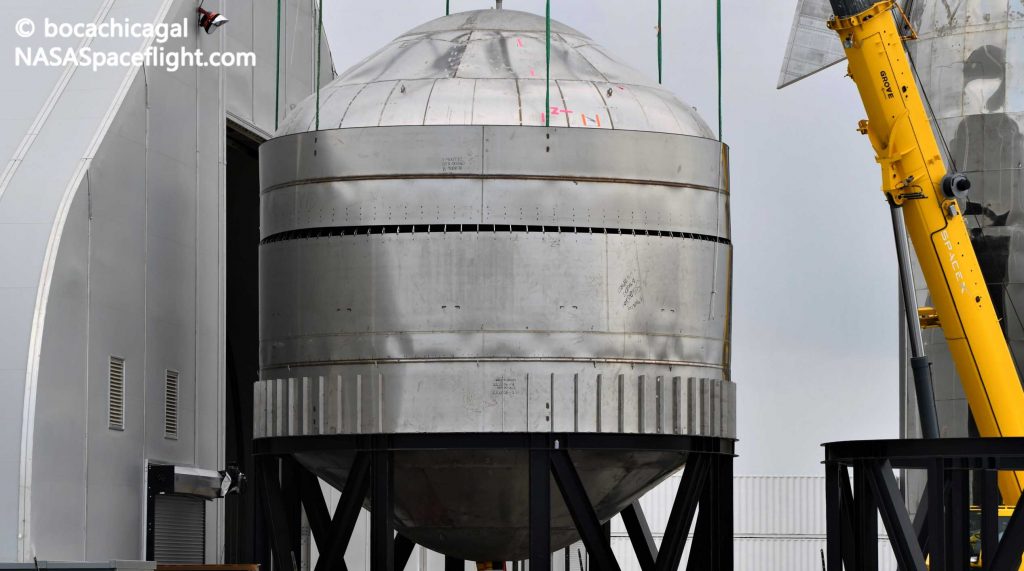
It’s unclear if this is the custom-built “30X” alloy SpaceX was planning on creating, given that “304L” steel is an already-available commodity material that is slightly more durable and corrosion-resistant but less ductile and ~10% more expensive than 301. Regardless, changing to a new alloy would almost certainly benefit from real-world testing to confirm that behaves in the ways SpaceX expects it to, while also verifying that existing fabrication methods (particularly welding) still suffice.
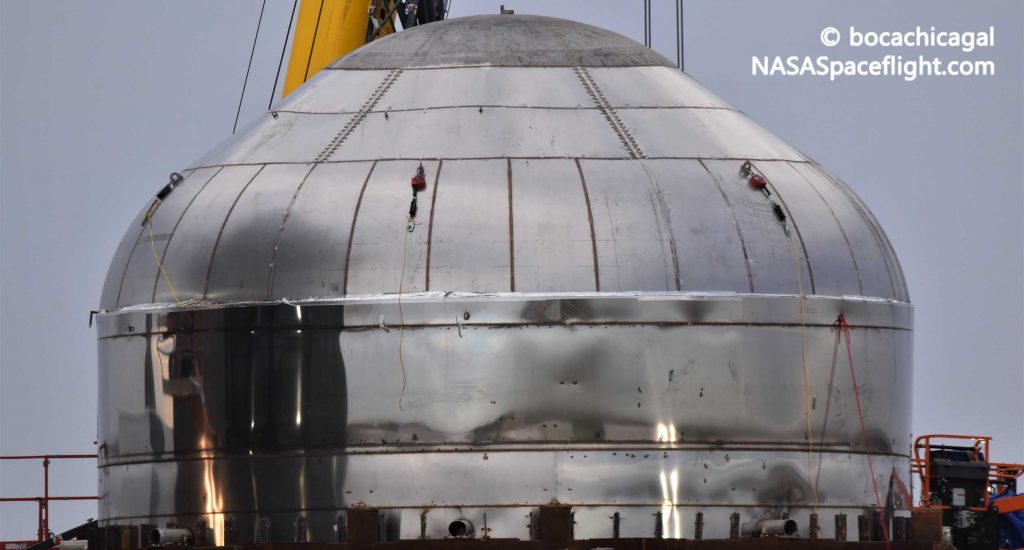
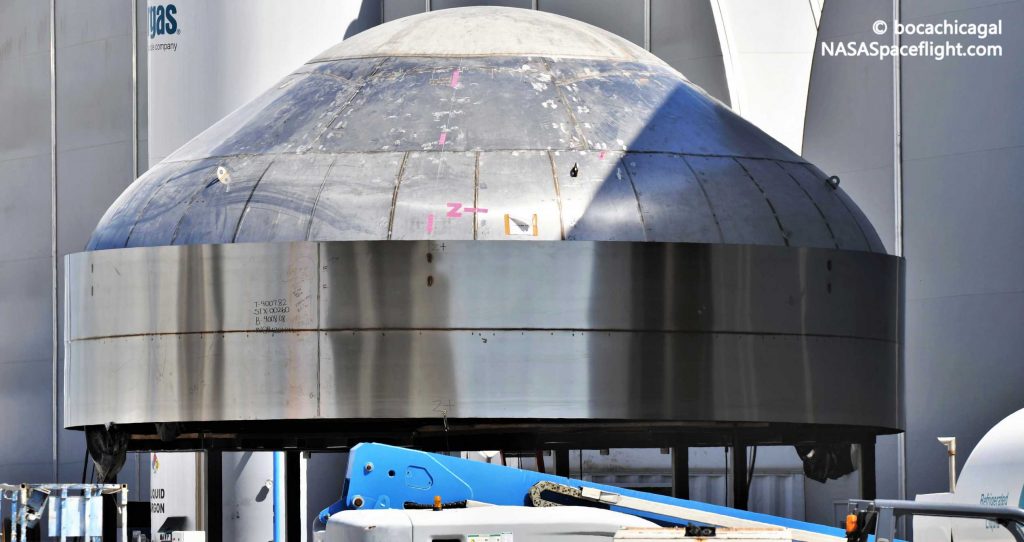
The only other notable visual differences between Starship Test Tank #4 and its predecessors are small changes in welding. On the new tank’s dome and ring, SpaceX has removed wavy strips of metal known as a weld doublers, used to strengthen vertical welds on all previous ships and test tanks. While only realizing miniscule weight savings, the change is a visual confirmation that SpaceX is growing more confident in its weld quality, perhaps also signifying the introduction of a new kind of welding.
Last but not least, the circumferential weld joining Test Tank #4’s dome and ring (a dark horizontal line) appears to be centered on the ring, whereas the domes of previous ships and tanks have typically been attached to the upper or lower 20-30% of their respective rings. The purpose of this change is unknown.
Regardless, Test Tank #4 is currently in the midst of an hours-long cryogenic proof test and appears to be almost fully loaded with several hundred tons of liquid nitrogen. Check out the frosty tank live at the link below as we wait to see if the Starship hardware survives.
Check out Teslarati’s Marketplace! We offer Tesla accessories, including for the Tesla Cybertruck and Tesla Model 3.

News
Tesla dispels reports of ‘sales suspension’ in California
“This was a “consumer protection” order about the use of the term “Autopilot” in a case where not one single customer came forward to say there’s a problem.
Sales in California will continue uninterrupted.”

Tesla has dispelled reports that it is facing a thirty-day sales suspension in California after the state’s Department of Motor Vehicles (DMV) issued a penalty to the company after a judge ruled it “misled consumers about its driver-assistance technology.”
On Tuesday, Bloomberg reported that the California DMV was planning to adopt the penalty but decided to put it on ice for ninety days, giving Tesla an opportunity to “come into compliance.”
Tesla enters interesting situation with Full Self-Driving in California
Tesla responded to the report on Tuesday evening, after it came out, stating that this was a “consumer protection” order that was brought up over its use of the term “Autopilot.”
The company said “not one single customer came forward to say there’s a problem,” yet a judge and the DMV determined it was, so they want to apply the penalty if Tesla doesn’t oblige.
However, Tesla said that its sales operations in California “will continue uninterrupted.”
It confirmed this in an X post on Tuesday night:
This was a “consumer protection” order about the use of the term “Autopilot” in a case where not one single customer came forward to say there’s a problem.
Sales in California will continue uninterrupted.
— Tesla North America (@tesla_na) December 17, 2025
The report and the decision by the DMV and Judge involved sparked outrage from the Tesla community, who stated that it should do its best to get out of California.
One X post said California “didn’t deserve” what Tesla had done for it in terms of employment, engineering, and innovation.
Tesla has used Autopilot and Full Self-Driving for years, but it did add the term “(Supervised)” to the end of the FSD suite earlier this year, potentially aiming to protect itself from instances like this one.
This is the first primary dispute over the terminology of Full Self-Driving, but it has undergone some scrutiny at the federal level, as some government officials have claimed the suite has “deceptive” naming. Previous Transportation Secretary Pete Buttigieg was vocally critical of the use of the name “Full Self-Driving,” as well as “Autopilot.”
News
New EV tax credit rule could impact many EV buyers
We confirmed with a Tesla Sales Advisor that any current orders that have the $7,500 tax credit applied to them must be completed by December 31, meaning delivery must take place by that date. However, it is unclear at this point whether someone could still claim the credit when filing their tax returns for 2025 as long as the order reflects an order date before September 30.
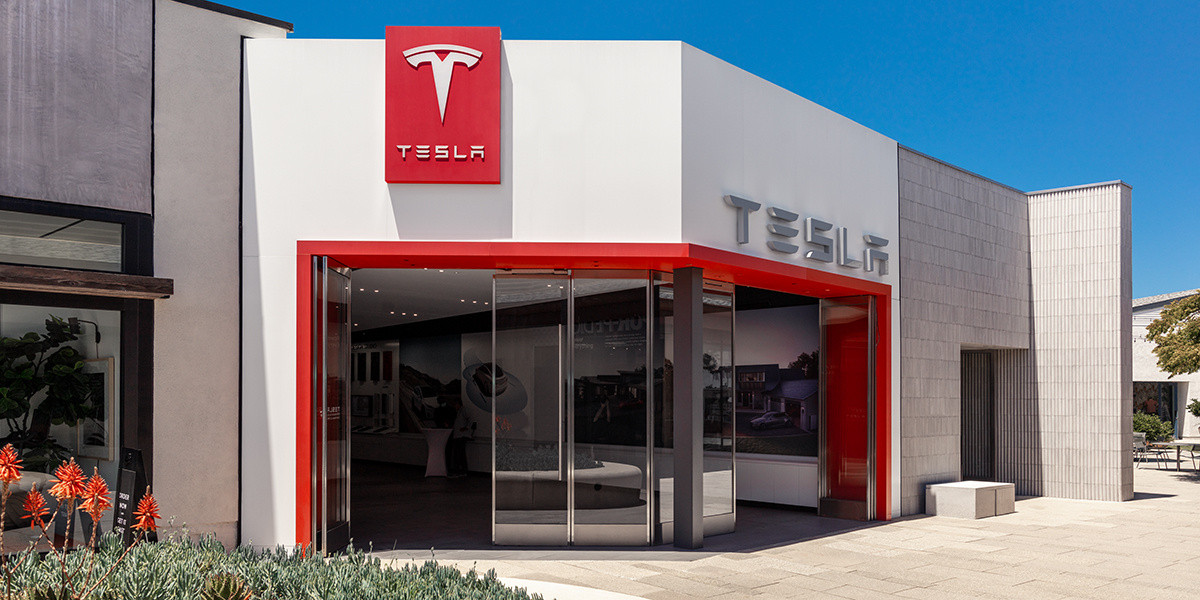
Tesla owners could be impacted by a new EV tax credit rule, which seems to be a new hoop to jump through for those who benefited from the “extension,” which allowed orderers to take delivery after the loss of the $7,500 discount.
After the Trump Administration initiated the phase-out of the $7,500 EV tax credit, many were happy to see the rules had been changed slightly, as deliveries could occur after the September 30 cutoff as long as orders were placed before the end of that month.
However, there appears to be a new threshold that EV buyers will have to go through, and it will impact their ability to get the credit, at least at the Point of Sale, for now.
Delivery must be completed by the end of the year, and buyers must take possession of the car by December 31, 2025, or they will lose the tax credit. The U.S. government will be closing the tax credit portal, which allows people to claim the credit at the Point of Sale.
🚨UPDATE: $7,500 Tax Credit Portal “Closes By End of Year”.
This is bad news for pending Tesla buyers (MYP) looking to lock in the $7,500 Tax Credit.
“it looks like the portal closes by end of the year so there be no way for us to guarantee the funds however, we will try our… pic.twitter.com/LnWiaXL30k
— DennisCW | wen my L (@DennisCW_) December 15, 2025
We confirmed with a Tesla Sales Advisor that any current orders that have the $7,500 tax credit applied to them must be completed by December 31, meaning delivery must take place by that date.
However, it is unclear at this point whether someone could still claim the credit when filing their tax returns for 2025 as long as the order reflects an order date before September 30.
If not, the order can still go through, but the buyer will not be able to claim the tax credit, meaning they will pay full price for the vehicle.
This puts some buyers in a strange limbo, especially if they placed an order for the Model Y Performance. Some deliveries have already taken place, and some are scheduled before the end of the month, but many others are not expecting deliveries until January.
Elon Musk
Elon Musk takes latest barb at Bill Gates over Tesla short position
Bill Gates placed a massive short bet against Tesla of ~1% of our total shares, which might have cost him over $10B by now
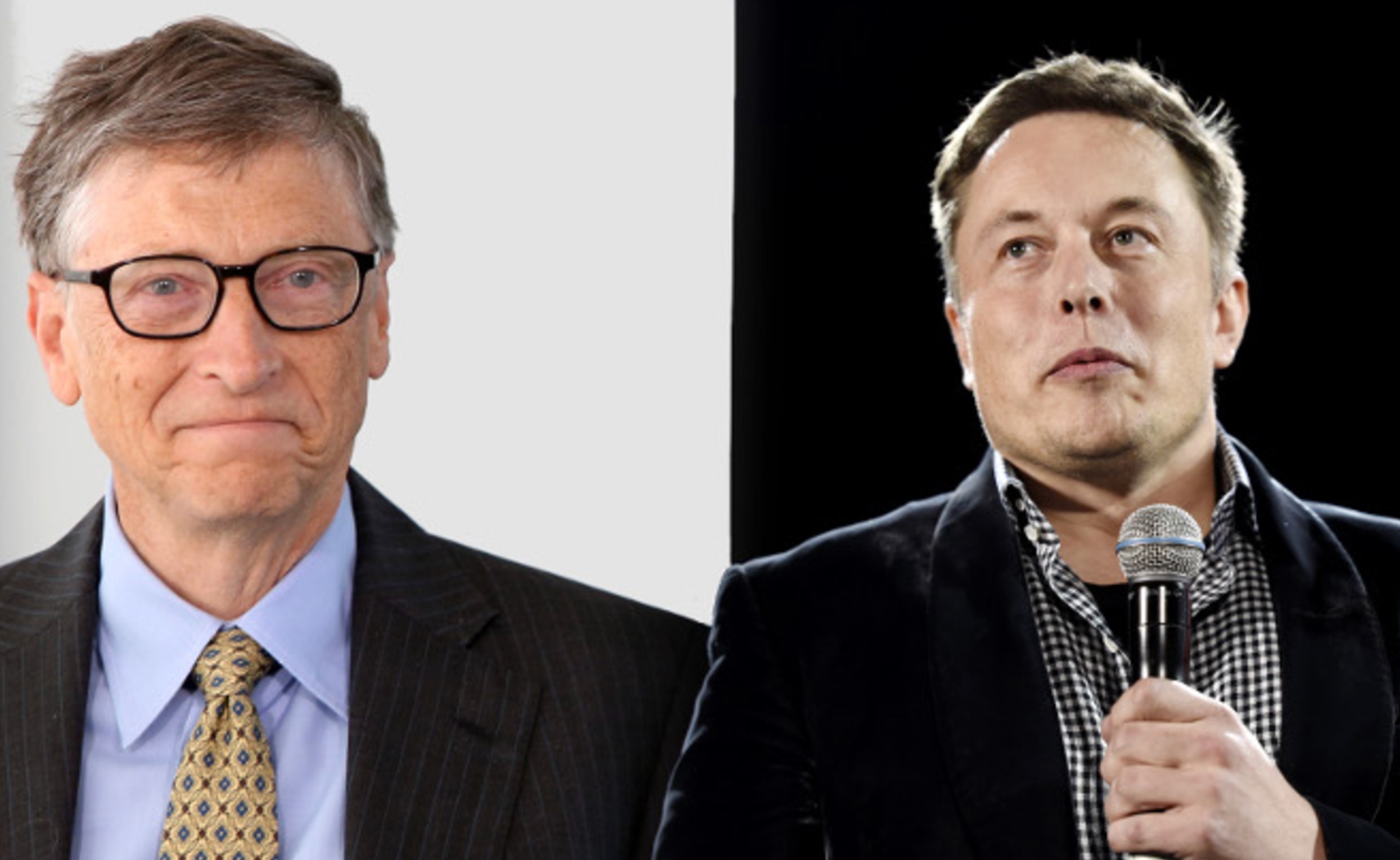
Elon Musk took his latest barb at former Microsoft CEO Bill Gates over his short position against the company, which the two have had some tensions over for a number of years.
Gates admitted to Musk several years ago through a text message that he still held a short position against his sustainable car and energy company. Ironically, Gates had contacted Musk to explore philanthropic opportunities.
Elon Musk explains Bill Gates beef: He ‘placed a massive bet on Tesla dying’
Musk said he could not take the request seriously, especially as Gates was hoping to make money on the downfall of the one company taking EVs seriously.
The Tesla frontman has continued to take shots at Gates over the years from time to time, but the latest comment came as Musk’s net worth swelled to over $600 billion. He became the first person ever to reach that threshold earlier this week, when Tesla shares increased due to Robotaxi testing without any occupants.
Musk refreshed everyone’s memory with the recent post, stating that if Gates still has his short position against Tesla, he would have lost over $10 billion by now:
Bill Gates placed a massive short bet against Tesla of ~1% of our total shares, which might have cost him over $10B by now
— Elon Musk (@elonmusk) December 17, 2025
Just a month ago, in mid-November, Musk issued his final warning to Gates over the short position, speculating whether the former Microsoft frontman had still held the bet against Tesla.
“If Gates hasn’t fully closed out the crazy short position he has held against Tesla for ~8 years, he had better do so soon,” Musk said. This came in response to The Gates Foundation dumping 65 percent of its Microsoft position.
Tesla CEO Elon Musk sends final warning to Bill Gates over short position
Musk’s involvement in the U.S. government also drew criticism from Gates, as he said that the reductions proposed by DOGE against U.S.A.I.D. were “stunning” and could cause “millions of additional deaths of kids.”
“Gates is a huge liar,” Musk responded.
It is not known whether Gates still holds his Tesla short position.








